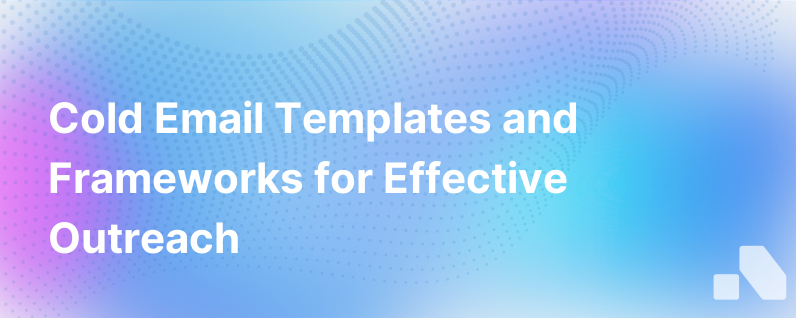
To many, the art of the cold email is something shrouded in mystery—a task with unwritten rules that can make or break your first impression on a potential client or partner. However, with the right framework and strategy, cold emailing can be demystified and transformed into a powerful tool in your marketing arsenal.
In this post, we’ll dissect the anatomy of a successful cold email, provide you with actionable templates, and explain the psychological principles behind each element—so you can not only engage prospects effectively but also understand the "why" behind the techniques. By the end, you’ll have a toolkit that turns cold emailing from a guessing game into a science.
The Anatomy of a Cold Email
A successful cold email can be likened to a well-engineered machine, each part functioning harmoniously to achieve a single goal: getting a response. Below are the core components of a cold email:
- Subject Line: The handshake of your email. This is what determines whether your email gets opened or ignored.
- Opening Line: The first impression inside the email itself, it should be personalized and engaging.
- Value Proposition: Clearly states what you are offering and why it’s relevant to the recipient.
- Social Proof: Builds credibility by showing how you’ve helped others or your expertise level.
- Call to Action (CTA): A direct and clear request that tells the recipient what to do next.
- Closing Line: A sign-off that can leave a memorable impression or offer a secondary CTA.
- Signature: Provides additional context about you and your legitimacy.
Each component plays a critical role in the effectiveness of your cold outreach.
Template Frameworks
Here are frameworks that outline the structure of high-converting cold emails. Use them as a starting point to create your own templates.
The Personal Connection Framework
Grab your prospect's attention by connecting on a common ground.
Subject: {Point of connection} caught my eye
Hi {Name},
I recently came across your comment on {Topic or Location} in {Group/Forum/Event}. It's rare to find someone who shares a passion for {Shared Interest}, and it prompted me to reach out.
My name is {Your Name}, and I specialize in {Your Specialty} that often tackles challenges like {Challenge relevant to prospect}. I’ve worked with companies such as {Company or example}, and I believe {Your Product/Service} could provide {Specific Value} to {Their Company}.
I'd love to explore how we can achieve a similar outcome for you. Are you available for a quick call this {Date/Time frame}?
Best,
{Your Name}
{Your Position}
{Your Contact Information}The Authority and Credibility Framework
Establish yourself as an expert and a proven solution provider.
Subject: {Brief teaser about the value you offer}
Hi {Name},
As an {Your Professional Role} who has aided {Target Industry/Market} companies like {Examples of Past Clients}, I understand the {Common Pain Point/Challenge} that you might be facing.
{Your Company/Product} has been pivotal in helping organizations achieve {Specific Benefit}. For example, {Case Study or Testimonial Highlight}.
I'm confident we could see similar success at {Their Company}. Could you direct me to the right person to discuss {Relevant Topic} with, or perhaps we could schedule a time to chat briefly?
Appreciatively,
{Your Name}
{Your Position}
{Your Contact Information}The Mutual Benefit Framework
Propose a win-win scenario that appeals to the recipient’s own interests.
Subject: Idea for {Their Company's Area of Interest}
Hi {Name},
Hope this message finds you well. I’ve been following {Their Company} for some time, and given your recent {Initiative/Project/Milestone}, I think there’s a mutual benefit we could address.
{Your Company/Product}, specializes in {Area of Expertise/Service} and has helped businesses in {Their Industry} with {Specific Outcome}. With that in mind, I have a few ideas on how we might collaborate that I think you’ll find intriguing.
Are you open to a brief chat this week to discuss this potential synergy?
Warm regards,
{Your Name}
{Your Position}
{Your Contact Information}The Brief and Bold Framework
Be direct and concise, showing respect for the recipient's time.
Subject: Quick question
Hi {Name},
Knowing how busy you must be, I’ll keep this brief. I’m {Your Name} from {Your Company/Product}, where we help entities like {Their Company} with {Specific Solution to a Problem}.
One of our recent initiatives {Outcome or Benefit of Your Service/Product} sparked the reason for my outreach. I believe we could help you {Achieve Specific Goal or Result}.
May I have 10 minutes of your time this week for a no-obligation chat?
Best,
{Your Name}
{Your Position}
{Your Contact Information}The Psychology Behind the Templates
Each of these frameworks leverages psychological principles to enhance the likelihood of getting a response:
- Reciprocity: By offering valuable insights or advice up front, recipients are more inclined to respond in kind.
- Social proof: Providing examples of reputable companies you’ve worked with boosts your credibility.
- Commitment and consistency: When people commit, even if it's just considering your request, they’re more likely to act in a way that's consistent with that commitment.
- Scarcity: Suggesting limited time on your calendar can make the opportunity of a meeting feel more valuable.
- Liking: Revealing shared interests or compliments can increase affinity and the chance of a positive response.
In conclusion, the secret to successful cold emailing is to have a targeted, personalized approach that conveys value compellingly and succinctly. Utilize these frameworks but remember to tailor each component to your recipient for maximum impact.
An effective cold email strategy is not a monologue but an invitation to a dialogue. With that mindset, and the tools outlined above, startups and established companies alike can look forward to turning cold prospects into warm leads and, ultimately, into fruitful business relationships.